I know that place, I muttered to myself while watching season 2 of Star Trek Discovery. The tell-tale support pillars were instantly familiar to me, as I had seen them many times before; there was no doubt that those were the generator supports from the massive Richard L. Hearn Thermal Generating Station in Toronto’s Portlands. I knew that Discovery filmed in Ontario and the GTHA (Greater Toronto-Hamilton Area), having seen the white church from Balls Falls and the Niagara Escarpment near Milton, all featured in both Season 1 and 2 of the then-latest Star Trek series. Hearn was my first extensive exploration and one that still sticks with me today; not only was it one that I saw my photography improve over ten years, but also one I saw turn from nearly intact to a hollowed-out former shell. So it only makes sense that “The Hearn” is the best subject for my inaugural entry in this new series.

Konica Minolta DiMAGE Z2 – Konica-Minolta GT Lens 38-380mm 1:2.8-3.7 APO
After the First World War, Ontario launched an infrastructure project to improve, standardise and modernise the electrical grid. Through the late 19th Century and into the first decade of the 20th Century, electrical generation was often done at a municipal level or through private enterprise. Headed by Sir Adam Beck, he promoted the idea of a publicly owned and operated electrical grid, dona naturae pro populo sunt, or the gifts of nature are for the public and the slogan Power At Cost. With the backing of Ontario Primer James Whitney, the Hydroelectric Power Commission of Ontario was created in 1906, but started in earnest following the war and gained steam in the 1920s. The need for more power came following the Second World War and the massive urban expansion in the province. To help fuel this expansion, Ontario Hydro began plans in the late 1940s for a new type of generating station, one fired by coal. Toronto, Ontario, was selected as the location for this first plant; since 1910s, Ashbridge Bay had been used as a dumping site from construction in downtown Toronto and made the perfect site for the new station. American design and Engineering firm Stone & Webster was contracted to design the station. English firm Parsons produced the generators, and Canadian firm Babcock & Wilcox created the boilers to generate the steam to drive the turbine generators. One of Beck’s men, Richard L. Hearn, would have his name attached to the station early on in the project. The irony of this choice is that Richard Hearn was a promotor of nuclear-based generating stations rather than coal. And even before the new coal station saw completion, talks were already in place to retire it for nuclear stations. While atomic energy would come in 1951, Premier Leslie Frost opened the new Richard L. Hearn Thermal Generating station, and the first two 100MW coal-fired turbine generators started to pump out electricity. By 1953, units 3 and 4 were also operational. By 1961, four more units were added; these new 200MW would bring the station up to the full capacity in 1963, a total of 1,200MW. Through the next two decades, Hearn would operate at its peak capacity, burning 400 tonnes of coal per hour and employing 600 people. Hearn became the template for two other coal power stations, Lakeview Generating Station, which opened in 1962 and Nanticoke, which opened in 1972. Both these stations easily surpassed the power generation of Hearn, with Lakeview outputting 2,400MW in 1968 and Nanticoke outputting 4,000MW in 1978. Hearn also provided a start to the career of many employees of Ontario Hydro, who went on to work at the other two coal stations and even nuclear power stations. But all that burning coal resulted in a great deal of pollution to the city, with five short and three taller stacks, greenhouse gases, and fly ash contributing to an already dirty town and a great deal of smog. By the 1970s, efforts were underway to clean up Toronto. In response, Ontario Hydro installed electrostatic preceptors and a massive 215m tall super stack to replace the eight for nine million dollars, approximately 67.3 million dollars in 2023. The second was to convert the station to burn natural gas rather than coal. All eight units underwent this conversion, with the four 200MW units retaining the ability for coal-fired production. After one year of service, the station burned one billion cubic meters of natural gas at a discounted rate, which caused a skirmish between Ontario and Alberta, who called it a free ride and a waste of the resource. Between 1978 and 1979, all but units six, seven and eight were mothballed, and the final three units returned to coal operation. The station staff was reduced to 180 employees. All power generation operations ceased in 1983, with only ten staff retained to maintain the hydro switching yard and keep the generators operating as synchronous condensers to help stabilise and clean up the electrical energy.
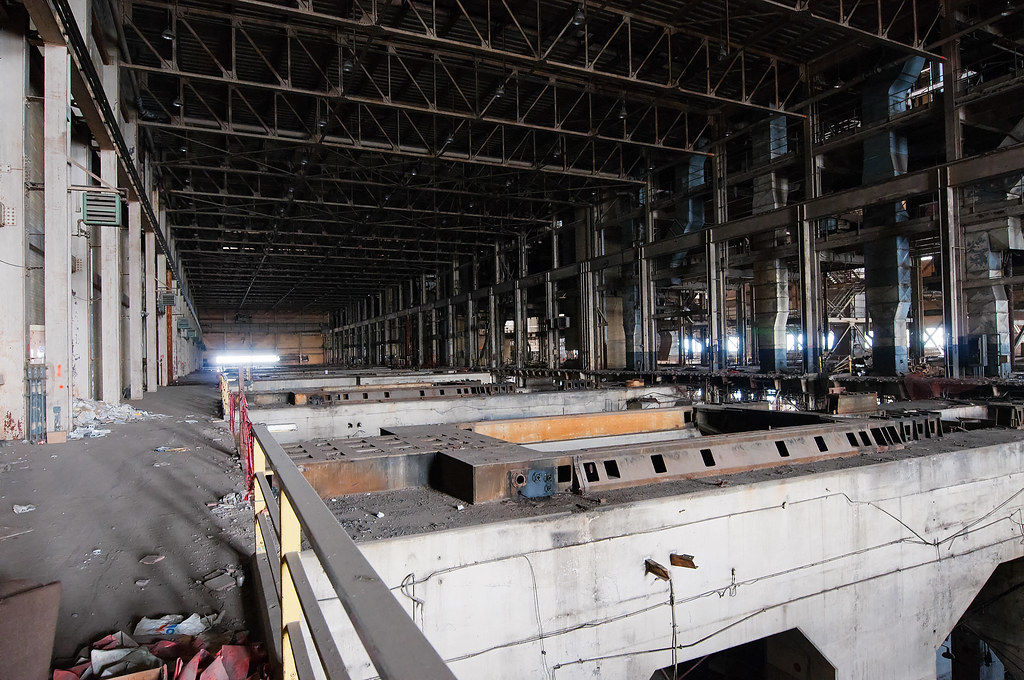
Nikon D300 – AF-S Nikkor 14-24mm 1:2.8G
Nikon D300 – AF-S Nikkor 14-24mm 1:2.8G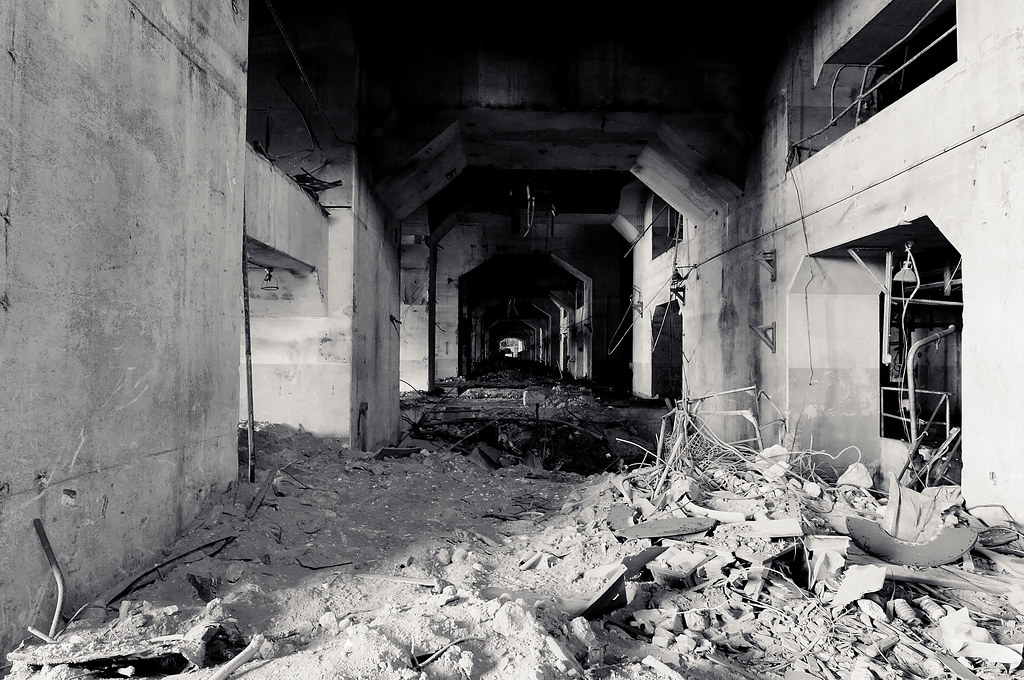
Nikon D300 – AF-S Nikkor 14-24mm 1:2.8G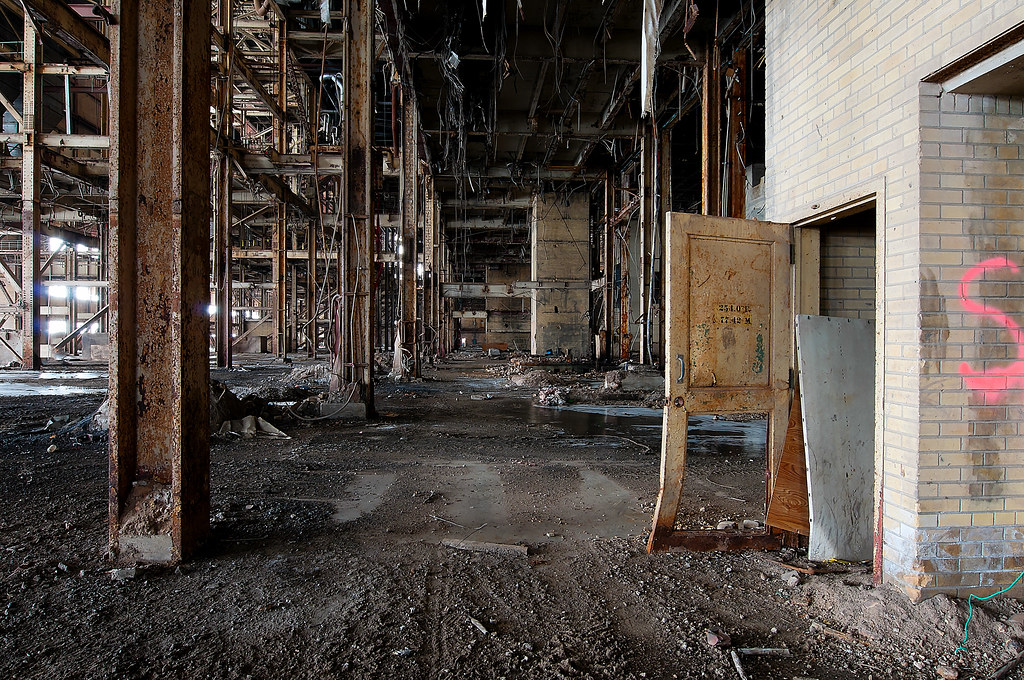
Nikon D300 – AF-S Nikkor 14-24mm 1:2.8G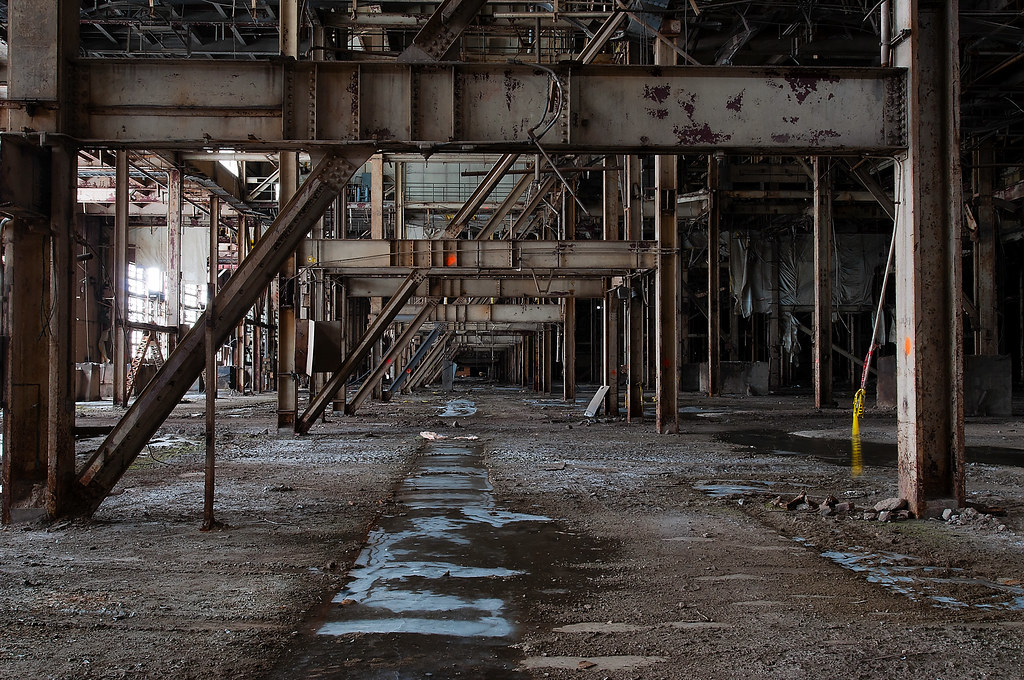
Nikon D300 – AF-S Nikkor 14-24mm 1:2.8G
Despite the age and size of Hearn, there were several efforts through the 1980s and early 1990s to restore Hearn to operation. Most of these involved using natural gas, co-generation, and other clean(er) energy production attempts. One of the weirdest plans was to burn medical waste to generate the needed steam to drive the turbines. The closest that Hearn came to restarting was in 1990 when Ontario Hydro predicted a spike in demand over the winter to turn on Hearn to meet the expected demands. But the NDP government of 1991 stopped that plan quickly. Even the switching yard ceased operations in 1995, and the station was closed. But that wasn’t the end of the story; Hearn promptly found a second life as a set piece for movies and television. Even in 1983, Hearn provided the exterior of a brewery in the comedy film Strange Brew. In 2002, Studio of America signed a thirty-five-year lease to convert the massive station into a movie production studio. Extensive remediation efforts and internal demolition of the boilers were undertaken. While the studio deal fell through in 2006, the station continued to see use in film and television productions, including Star Trek Discovery, Goosebumps, various Disney Channel productions, and Silent Hill Revelation. All eight generators were removed and scrapped in 2007, as the Portland Energy Centre co-generation plant opened in 2008. The same year, an explorer lost his footing and fell into an old coal chute and ultimately died from his injuries. Since then, Hearn has been used in the Luminato festival and other live performances and art installations. Lakeview and Nanticoke were decommissioned and demolished in 2005 and 2013, respectively, removing all coal-based power generation in Ontario.

Nikon D300 – AF Nikkor 50mm 1:1.4D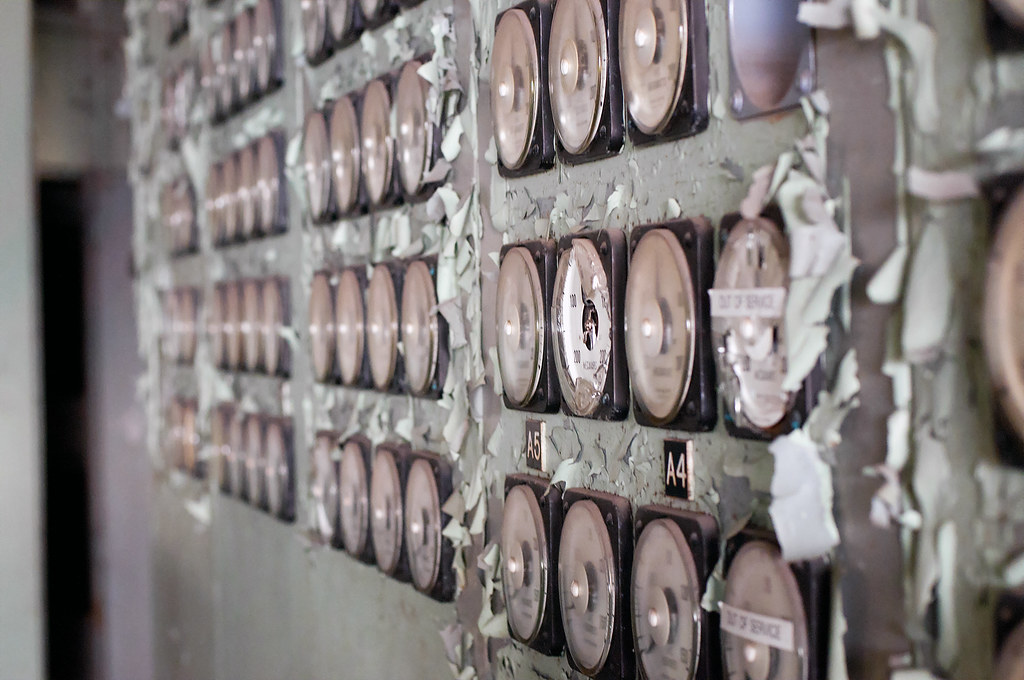
Nikon D300 – AF Nikkor 50mm 1:1.4D
Nikon D300 – AF Nikkor 50mm 1:1.4D
Nikon D300 – AF Nikkor 50mm 1:1.4D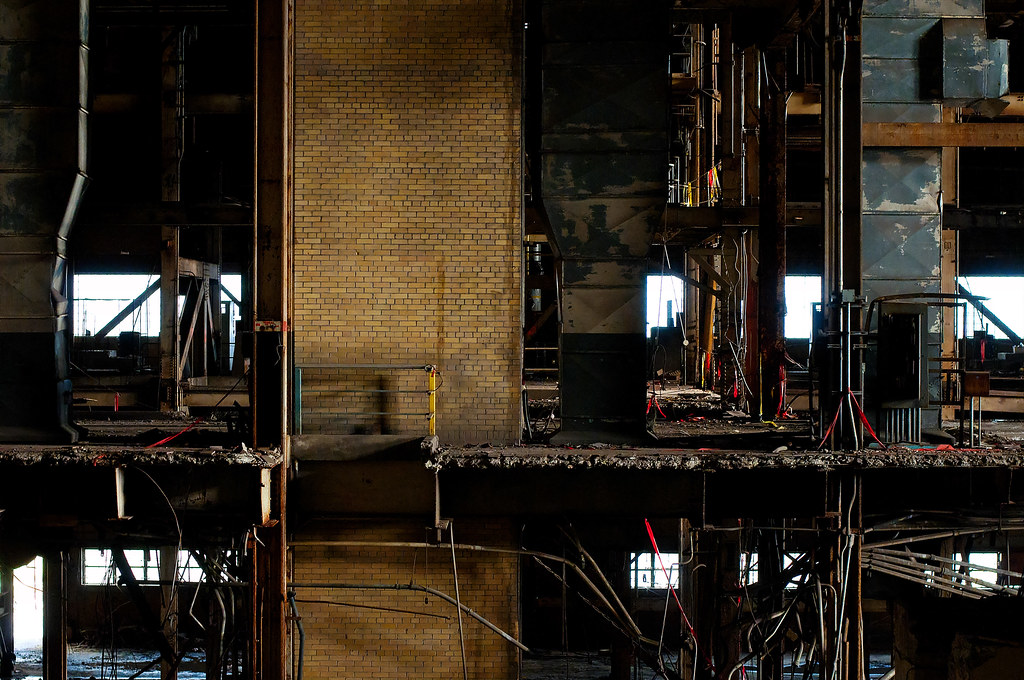
Nikon D300 – AF Nikkor 50mm 1:1.4D
My first trip to Hearn happened in 2005; I was fresh from graduating college and had some free time. I was also interested in urban exploration, which led me to UER. One thing that took place every month was a meeting of Toronto explorers. I took the GO train to Exhibition Station with a classmate (it is always a good idea to bring a friend when meeting strangers) and got to the Liberty Village Cafe and Market. In 2005, Liberty Village was still getting restored and renovated into the gentrified neighbourhood it is today. While the event is mainly social, it was an open secret that usually ended up with an excursion. By then, I had yet to do anything beyond rural trips, a few houses, an abandoned Renaissance fair, and some failed attempts into downtown Guelph. So I was at the mercy of the group if they were willing to accept the new face; as it turned out, they were to a point. We were shuttled out to the other side of the city, the Portlands, to visit a place called “The Hearn.” I had no idea what this place was, but it was an experience. We approached from the old coal fields on the opposite side of the station from the security booth and the guy who drove us out doing a dive roll through a broken window. We all went in through a damaged door. The sheer scale of the place wowed me; I had never seen a massive abandoned building, let alone one with so much stuff left over. The trip was short; I didn’t even get to see the best parts of the station as I had to get out to make it back to Union Station to catch the train back home. Hearn quickly became a favourite of mine, and throughout several other trips, I could visit all the different sections of the station over ten years. I also saw the station change from having all eight generating units intact to tearing up the entire turbine hall. The construction of the Portland Energy Centre required us to adjust our entry point, this time on the same side of the station as the security booth. Thankfully, I was better versed in avoiding security by this point. And it helped that the security on site started to get more lax. If you timed things right, entry and exit proved easy as long as you had others of the same philosophy. A close call and a large group made me rethink my visits to Hearn; I started to get happy with the results I was getting, so I decided to close the door on Hearn. By then, security had begun to be more active on the site, including some active patrols. After the large group began to make way more noise than I was comfortable with, the close shave on a solo trip (a rare thing for me) would be the factor.
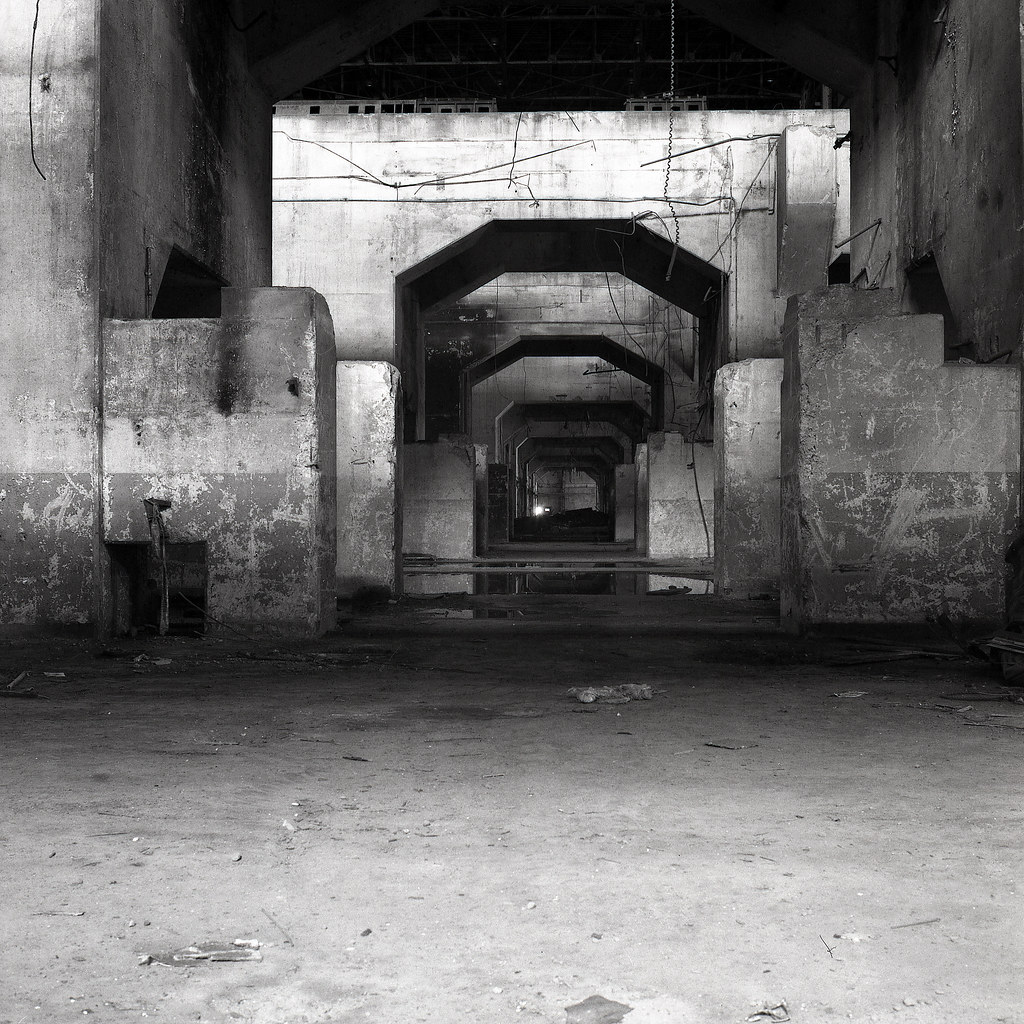
Rolleiflex 2.8F – Carl Zeiss Planar 80mm 1:2.8 – Shanghai GP3 @ ASA-100 – Processing By: Silvano’s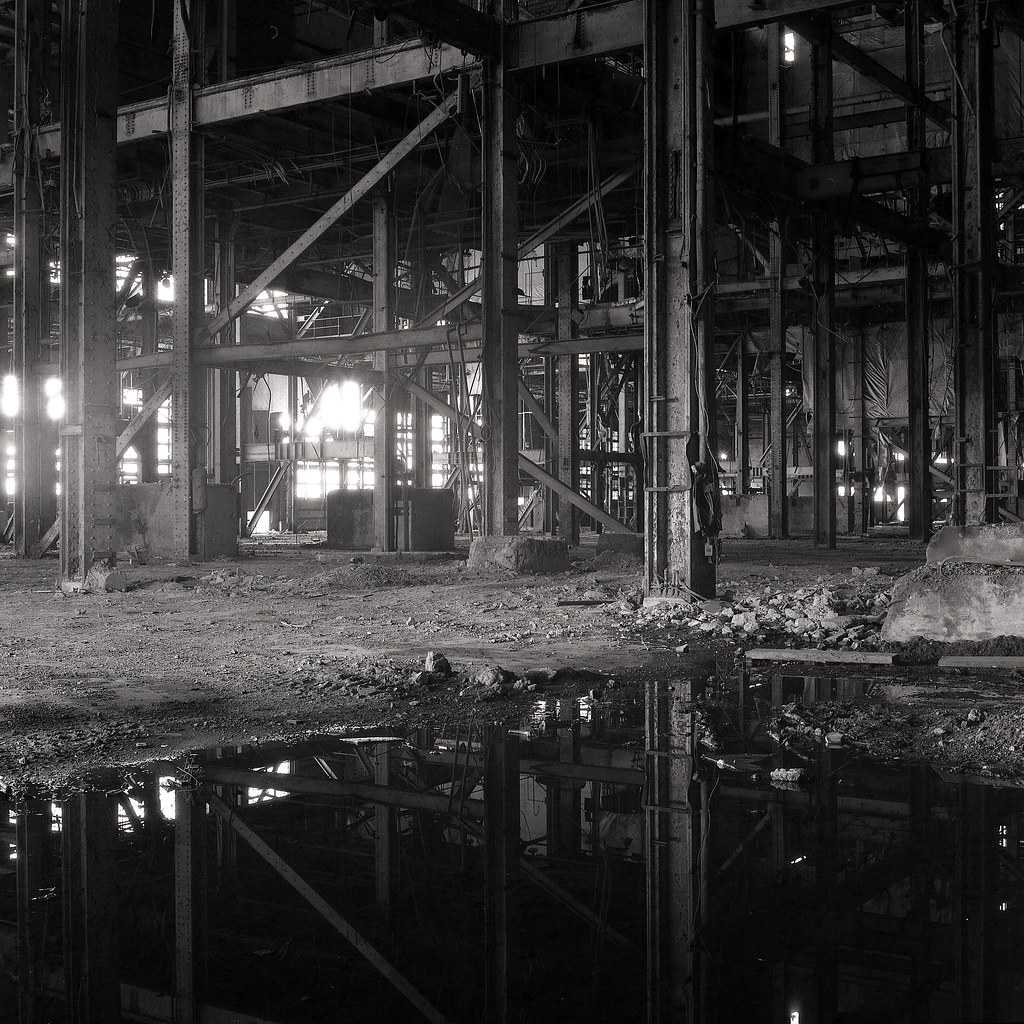
Rolleiflex 2.8F – Carl Zeiss Planar 80mm 1:2.8 – Shanghai GP3 @ ASA-100 – Processing By: Silvano’s
Rolleiflex 2.8F – Carl Zeiss Planar 80mm 1:2.8 – Shanghai GP3 @ ASA-100 – Processing By: Silvano’s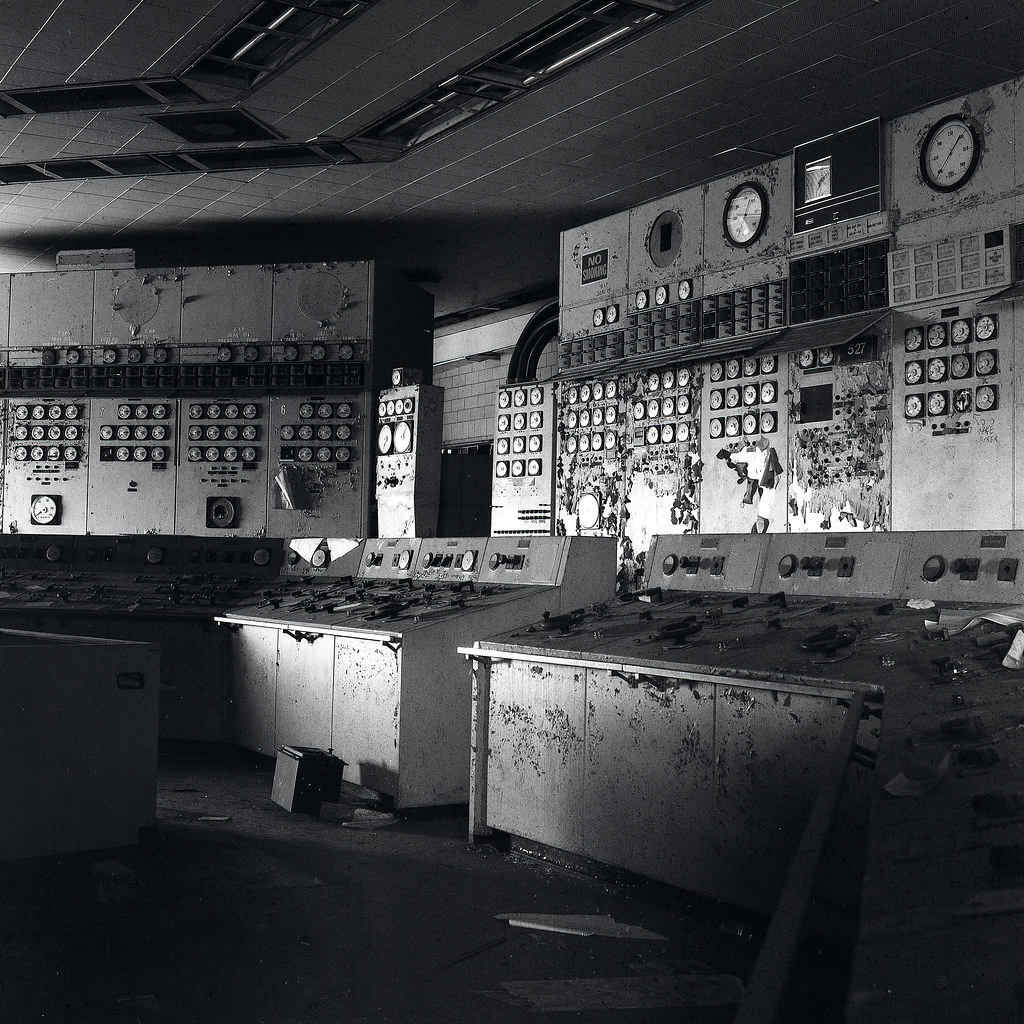
Rolleiflex 2.8F – Carl Zeiss Planar 80mm 1:2.8 – Shanghai GP3 @ ASA-100 – Processing By: Silvano’s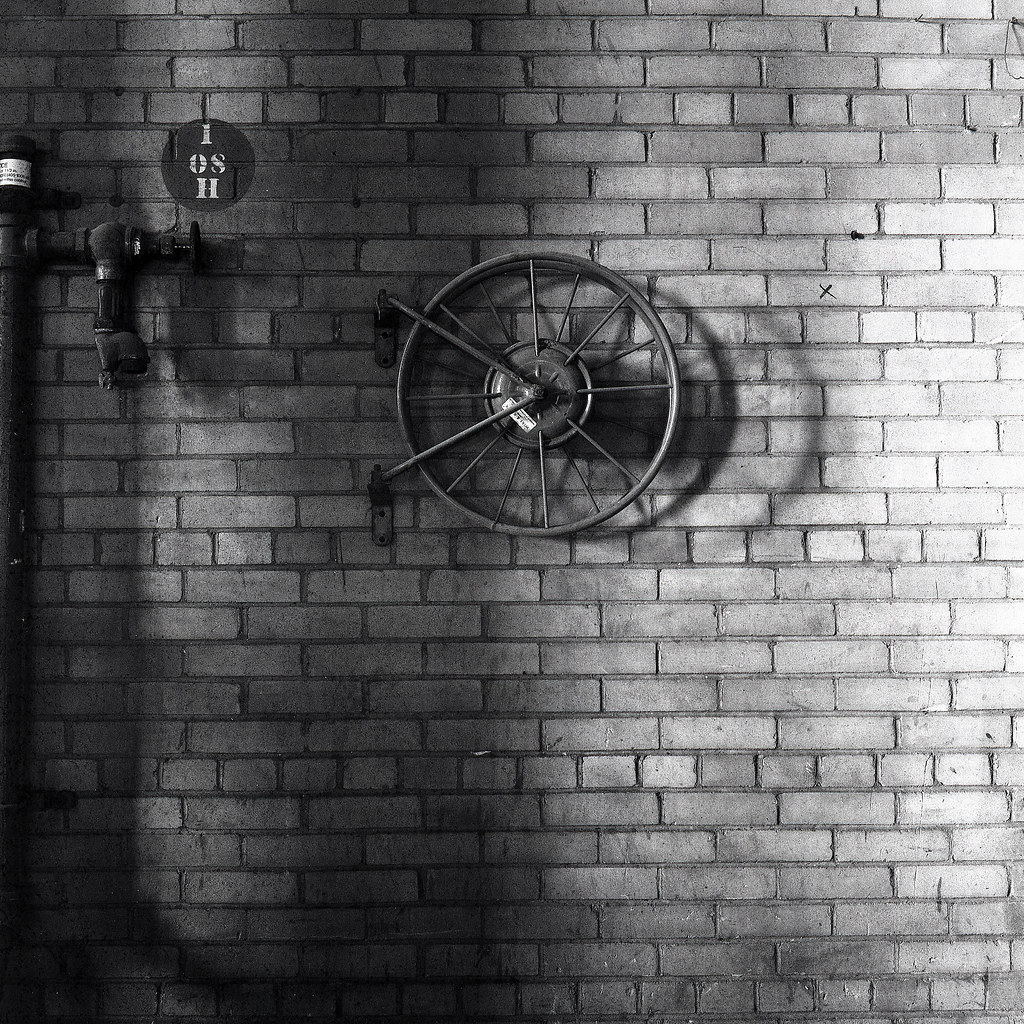
Rolleiflex 2.8F – Carl Zeiss Planar 80mm 1:2.8 – Shanghai GP3 @ ASA-100 – Processing By: Silvano’s
Ten years is a long time, and going back to the exact location, again and again, will often force you to see familiar places in a new way and shoot until you’re happy with the vision of the place captured in photographic form. When I first started going, I was still very new to photography, having first picked up a camera in 2002, and the camera I was using at the time, a Konica-Minolta DiMAGE Z2, was only a month old in my hands. While the camera was decent, today’s Digicam crowd would value the CCD sensor and look. There were a lot of drawbacks. First, I understood what digital noise was about these small-sensor cameras. Also, my composition skills needed to improve. And that first trip was cut short when I got a bit scared from a near miss with a security guard. But I did get away with a couple of decent images. By the next trip, a few months later, I was getting more confident in my photography and got far better pictures with my Z2. This only improved as I started to use SLRs; my F80 came along loaded with a roll of slide film and my D70s. I improved my composition and worked harder on my manual exposure, learning to trust my gut more than the camera’s meter. Image quality improved with better lenses and sticking to lower ISOs. My favourite shots were taken during my last five years exploring Hearn, the D300 and the 14-24mm lens. I could finally execute images to show off how I saw Hearn. The massive skeleton of a generating station. I also got into using a handheld 50mm lens to get close to details with a narrow depth of field. I also learned to appreciate and use square format with my Rolleiflex TLR with black & white and colour slide film. Oddly enough, I never shot a colour negative at Hearn. By the end of my time visiting Hearn, my compositions and exposure were far better than when I started. Aided by both practice and, when that took me so far, additional gear to get me the rest of the way there.
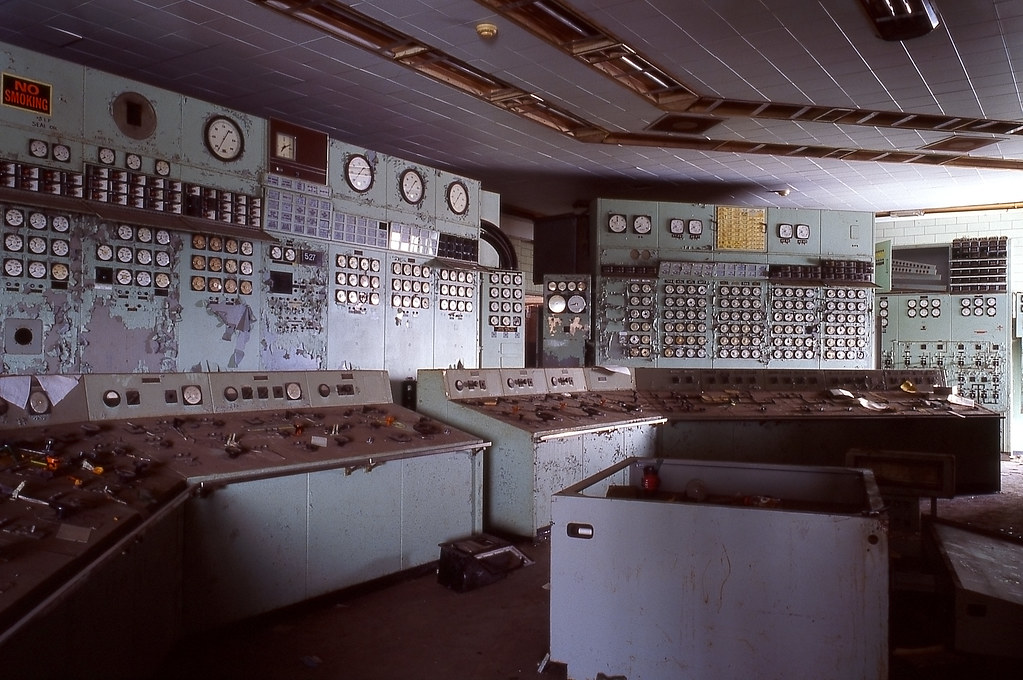
Kyocera Contax G2 – Carl Zeiss Biogon 2.8/28 T* – Agfa Precisa 100 @ ASA-100 – Processing By: Silvano’s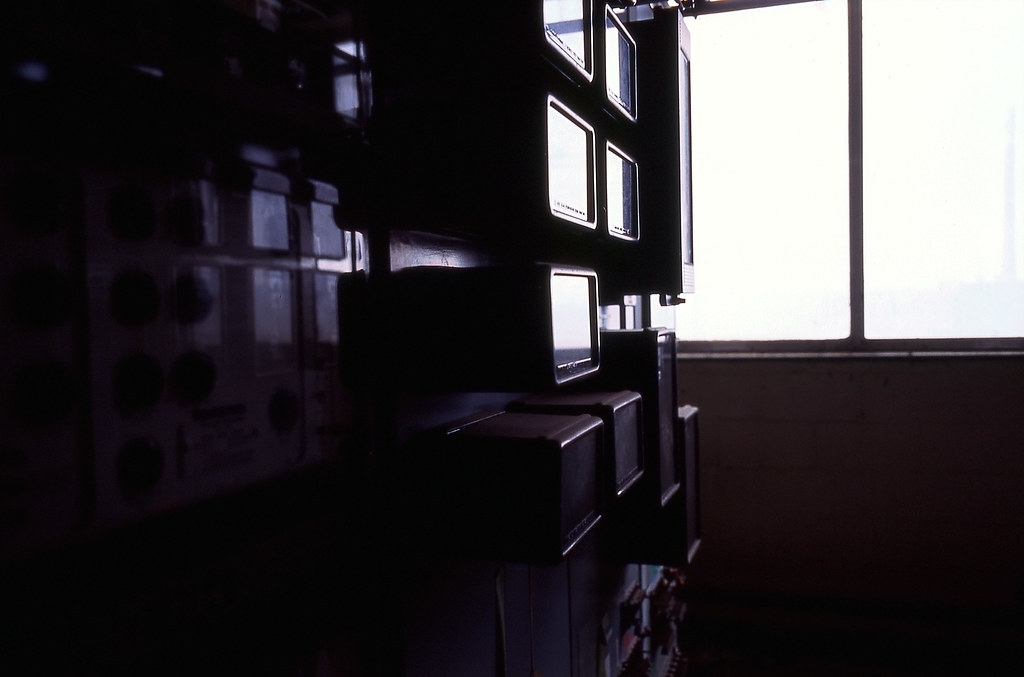
Kyocera Contax G2 – Carl Zeiss Biogon 2.8/28 T* – Agfa Precisa 100 @ ASA-100 – Processing By: Silvano’s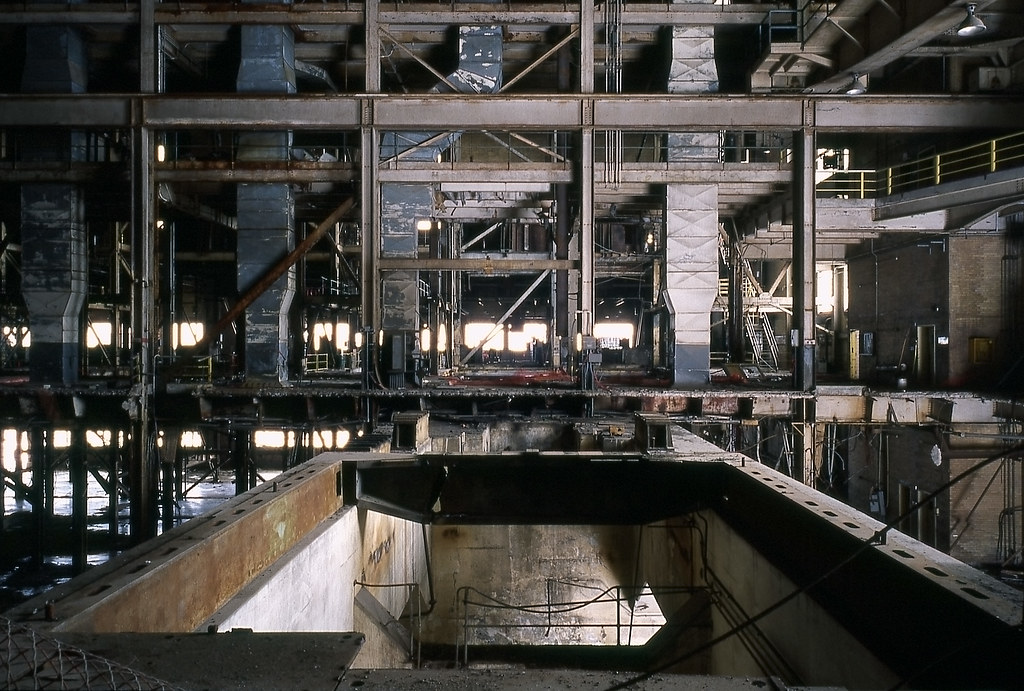
Kyocera Contax G2 – Carl Zeiss Biogon 2.8/28 T* – Agfa Precisa 100 @ ASA-100 – Processing By: Silvano’s
Kyocera Contax G2 – Carl Zeiss Biogon 2.8/28 T* – Agfa Precisa 100 @ ASA-100 – Processing By: Silvano’s
Kyocera Contax G2 – Carl Zeiss Biogon 2.8/28 T* – Agfa Precisa 100 @ ASA-100 – Processing By: Silvano’s
The Hearn will always be a close favourite of mine; I still look for the super stack whenever I’m in the city’s eastern part. I still want to get back inside during an event to see how much the interior has changed since 2015. But illegal entries, while still possible, are out of the question. First, I made a promise last time to stay out illegally. Secondly, the entire area has changed since 2015; the whole place is far more active, with several massive filming studios. Plus, security has undoubtedly increased over time, especially with the continued operations of Portlands. But I will still have fond memories of the giant turbine hall and the stunning control room. You can check out my entire collection of images from 2005 to 2010 over on Flickr.
Glossary of Terms
Electrostatic Precipitator: An electrostatic precipitator (ESP) is a filterless device that removes fine particles, such as dust and smoke, from a flowing gas using the force of an induced electrostatic charge minimally impeding the flow of gases through the unit.
Synchronous Condenser: In electrical engineering, a synchronous condenser is a DC-excited synchronous motor, whose shaft is not connected to anything but spins freely. Synchronous condensers are an alternative to capacitor banks and static VAR compensators for power-factor correction in power grids.
Cogeneration: Cogeneration or combined heat and power (CHP) is the use of a heat engine or power station to generate electricity and useful heat at the same time. Cogeneration is a more efficient use of fuel or heat, because otherwise-wasted heat from electricity generation is put to some productive use. Combined heat and power (CHP) plants recover otherwise wasted thermal energy for heating.
That was an interesting read, and some even more interesting photography! Loved the location, and hoping I can visit myself someday <3 I'm just a province away, too!